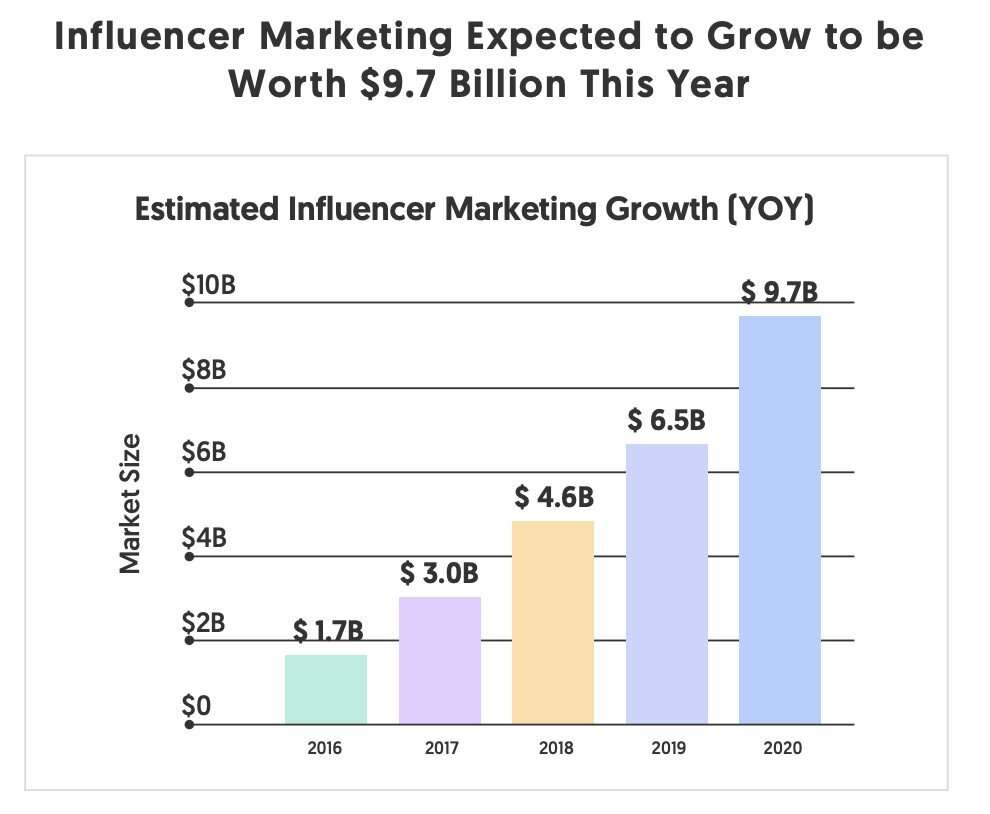You Guys, Influencer Marketing Works
[NOTE: I wrote this before COVID-19 erupted and considered not publishing at this time, but marketers are trying to define new roadmaps, and content creation and social media are critical now. So here it is. I hope you find the info useful.]
###
It’s that time of year again. Influencer Marketing Hub has released its annual state-of-all-things-influencer-marketing report: Influencer Marketing Benchmark: 2020. And I’m geeking out BIG TIME over the data.
First of all, this year they partnered with CreatorIQ, which is awesome because it’s allowed them to exponentially increase the number of respondents. This year they surveyed 4,000 agencies, brands and other industry professionals (last year the sample size was 800).
Second of all, they asked a lot of great questions. They addressed many topics top of my mind, many of which I think bears repeating, so, I’ve taken the liberty to pull out the gems and put them into this post.
Before diving into the data, here are my top takeaways:
The influencer marketing industry is booming and expected to reach $9.7B in 2020. Cha-ching.
91% of respondents find the influencer approach to be effective, significantly noting customers from influencer marketing are higher quality than other forms of marketing.
As a result of the above, ⅔ of respondents intend to increase their budget in 2020.
Finding influencers is the greatest challenge for those who run campaigns in-house.
Now, let’s go data diving, shall we?
Influencer Marketing Works
The exponential growth of the influencer marketing industry is quite remarkable. In 2020, it’s expected to reach $9.7 BILLION. That is up $3.2B from last year alone with a growth of $8B from 2016. Yowza.
The staggering growth is actually not all surprising when you dive into respondents' feedback about the influencer marketing approach in general. 91% (yes, you heard that right, 91%) of respondents think influencer marketing is an effective form of marketing.
Perhaps that’s because they’re prioritizing content production and see influencers as an effective generator and sharer of content. 84% of respondents have increased content output in the last 2 years. Content is king, amiright?
Perhaps it’s also because the approach is a good way to target niche audiences. 72% of respondents revealed that the quality of customers coming from influencer marketing campaigns is better than other forms of marketing.
In addition to generating meaningful content and reaching niche audiences, influencer marketing is also an effective way to gain mass exposure and reach. It’s kind of like killing 3 birds with one stone.
Show Me The Money
So, if influencer marketing is performing this well, what share of the marketing budget is it getting? 78% of respondents intend to spend at least 10% of their marketing budget on influencer marketing in 2020.
How does this compare to previous years' influencer marketing budgets? ⅔ of respondents intend to increase their influencer marketing spend in 2020.
Making The Magic Happen
As the Co-Founder of an agency that specializes in B2B influencer marketing, it’s really interesting to me to know how influencer marketing campaigns are being run. Because I presume, this data isn’t equally as interesting to everyone, the report doesn’t include colorful pie charts to illustrate the data. But what the facts reveal is that about 4/5 of influencer marketing campaigns are run in-house (78% of respondents).
That’s more than I would have expected.
But the report goes on to say “Some brands prefer to use agencies when working with micro- and nano-influencers because the agencies are more experienced at working with influencers at scale.” This makes sense given the next interesting data points.
When asking respondents “what is the greatest challenge in running influencer campaigns in-house,” 39% of respondents found it most difficult to find influencers to participate in their campaigns. Other notable areas of concern included managing the contracts/deadlines of the campaign (21%), bandwidth/time restraints (16%), and processing payment to influencers (11%).
Interesting. Verrry interesting. And exactly on point with the challenges our clients face and, to be frank, why our agency exists. We handle the nitty-gritty details and jump the hurdles so our clients can stay focused on their big picture goals.
Bottom Line
Influencer marketing is here to stay. And for good reason, it works. If you don’t have an influencer marketing strategy in place, it’s a good thing to put on your 2020 work goals vision board. If you want to brainstorm ways to integrate this approach into your marketing roadmap, shoot me an InMail, I would love to chat with you.
Chelsea Larson-Andrews, TechMode Co-Founder









